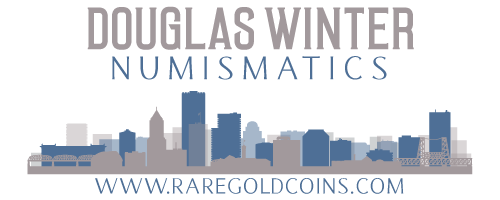The Record-Setting Sale of an 1875 Half Eagle: What Does it Portend?
/In the Bowers and Merena November 2010 Baltimore auction, a business strike 1875 half eagle sold without a lot of fanfare for a lot of money. I think this was one of the most significant individual sales in the rare gold coin market in 2010 and I'd like to spend a bit of time analyzing both the coin that was sold and the significance it portends for both the Liberty Head half eagle series and the rare gold market as a whole. The 1875 is the rarest collectible Liberty Head half eagle. (The 1854-S is rarer but with no pieces likely available to collectors in the near future, I regard this issue as "non-collectible.") Only 200 business strikes were produced and the number of pieces known has generally been estimated to be in the area of ten. I think this estimate is reasonably accurate although I think the actual number known could be as low as seven or eight.
The 1875 is unknown in Uncirculated and most of the examples that exist are in the EF40 to AU50 range. PCGS has graded five coins including an EF40 and two each in AU50 and AU53 while NGC has graded four: one in EF45 and three in AU55. I believe that these figures are inflated by resubmissions and the total number of distinct 1875 half eagles in slabs is four or five. There have been 10 auction appearances since 1991. Six have occurred since 2000 but this includes a number of reappearances of the same coin(s).
The coin in the Bowers and Merena auction was graded AU55 by NGC and it appeared to have been the same coin that was offered as DLRC's Richmond I: 1444 back in July 2004 where it brought a record-setting $86,250. There had been no other 1875 business strikes that had been available since the Goldberg 2/07: 2335 coin that brought $74,750.

The Bowers coin was part of an interesting set of 1875 gold coinage called the "Kupersmith Once in a Lifetime" collection. Terrible name but an interesting and impressive set with examples of the rare Philadelphia gold dollar, quarter eagle and three dollar gold piece from this year but, curiously without the very rare 1875 business strike (or Proof) eagle.
The coin in the Bowers sale brought $149,500 which is far and away a record price for a business strike of this date. Considering that this is an esoteric coin and, to be honest, it wasn't a really nice-looking piece, I think this price is very significant.
In the same sale, the coin right before the business strike was an 1875 half eagle graded PR66 Cameo by NGC. With a mintage of just 20, this has long been recognized as a great rarity and it is an issue that has usually brought more than its under-appreciated (but rarer) business strike counterpart. The Proof in the Bowers sale, sold as Lot 5042, brought $143,750. I was really surprised but really pleased to see this happen.
I've been thinking for a year or two that Liberty Head half eagles have a chance to be the "next big thing" in the world of rare date gold. Here's why. The Liberty Head double eagle series is extremely popular right now and there are not many "ground floor" opportunities for the new collector. Same goes for the eagle series although I still think there are some very undervalued issues. But the Liberty Head half eagle series remains under-collected and there are dozens and dozens of individual issues that are extremely undervalued.
So why is a $149,500 Liberty Head half eagle so an important? Because its the rarest collectible issue in the series and you typically see high-end collector activity in a series start with coins like this. In other words, you can buy the C and D mint issues any day but how often can you buy the Big Gun like the 1875?
If the coin had sold for, say, $80,000 or $90,000 I don't think it would have been a big deal. But with a sale at nearly $150,000 the bar has been raised and I think we'll see higher prices for other very rare non-Southern Liberty Head half eagles like the 1863, 1864, 1864-S and 1865.
Of course there is the very real possibility that this coin was not bought by a collector who plans to do a date set of Liberty Head half eagles and this totally blows a hole into my theory. It could have just as easily of been bought by someone doing a set of 1875 business strike gold coinage or someone who likes really rare coins like the 1875 half eagle and thinks that 150k is a great value for an issue with just eight or nine business strikes known. All true but, as I said above, the bar has now been raised for the rarities in this series and the days of being able to buy an 1875 half eagle in AU for less than $100,000 are gone.










